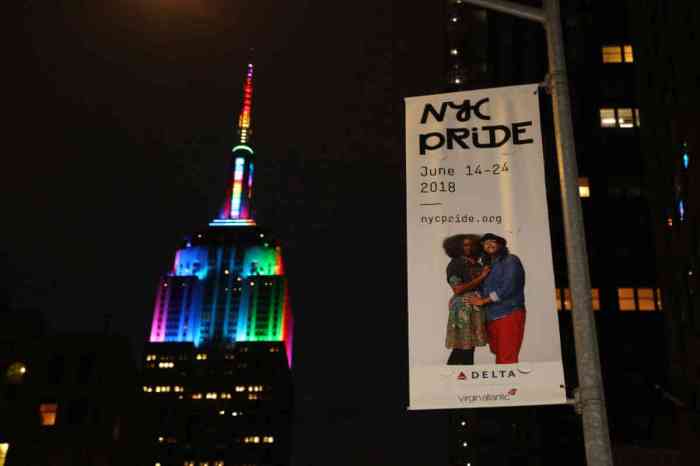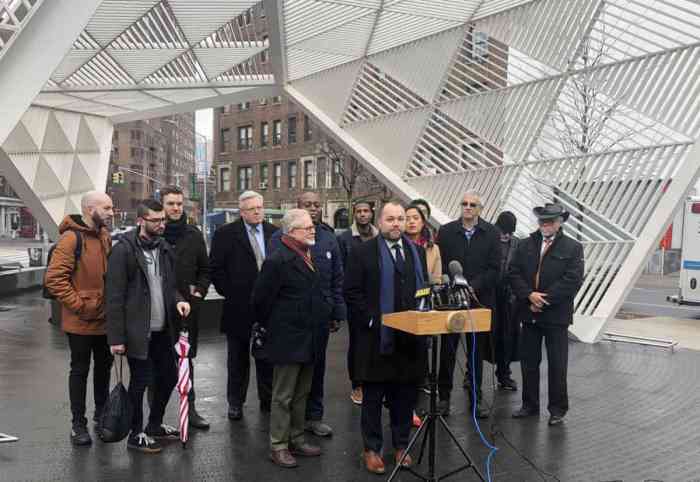On or about April 1, New York will go to pot. That was the conventional wisdom at a well-publicized mid-December Albany conference on legalizing recreational marijuana. That assessment was quickly confirmed by Governor Andrew Cuomo himself.
Making pot legal will be a prime objective of his third term, and things can move lickety-split. A Democratic governor with progressive Democratic majorities in the Assembly and Senate could advance the bill in the state budget, due on the first day of April.
That would be proof positive that ending the partisan gridlock between the Democrats and Republicans in Albany will will bring change — fast.
Cuomo has decided that his way to greet a new era is to reform the criminal law, create a new industry, and discover new ways to bring money into the state for badly needed programs. Legal adult use is expected to create all these benefits.
In a December 17 speech, the governor previewed his plans for New York. The criminal justice agenda would “address the forms of injustice” that befall minority residents — both by legalizing marijuana and ending cash bail. Imposing cash bail on people too poor to have the money leads their families to becoming victims of extortion or forces them to plead guilty to charges that the wealthy could fight. There are, Cuomo charged, two kinds of justice — “one for the wealthy and one for everyone else.”
Marijuana has had an outsized importance in the criminal justice reform push. Legalization both unlocks a forbidden pleasure and is a gateway for ending mass incarceration, a major cause of black and brown poverty.
In New York State, about 64 percent of the black and brown prisoners come from seven New York City neighborhoods: “Harlem, and the Lower East Side in Manhattan, South/ Central Bronx, Bedford Stuyvesant, Brownsville, and East New York in Brooklyn, and South Jamaica in Queens.” These men are parents and their families suffer because the primary wage earner is locked in prison based on coerced pleas. City Comptroller Scott Stringer found that neighborhoods with the lowest household income had the highest marijuana arrests rates. The State Health Department concluded that the benefits of adult use in combating this crisis of community poverty outweighed the longstanding objections to marijuana legalization.
What remains unresolved is one of the most contentious issues in the discussion: Where will the revenues from taxing legal marijuana go? With a fast start, it is expected that legal pot could bring in hundreds of million in the first year and nearly a billion to state and local governments annually going forward.
That optimism is based on using the State Liquor Authority to administer the program. The SLA already regulates bars, retail sales outlets, and distributors for alcoholic beverages. Marijuana is not expected to bring greater problems than those already presented by alcohol, and many supporters believe it will improve the quality of life for many users. The SLA is in a position to jump-start legalization.
The coalition that supports legal adult use brought hundreds of people to Albany on December 11 and 12 under the leadership of the Drug Policy Alliance, the George-Soros-funded group that has called for a new drug policy since Ronald Reagan was president and whose importance keeps growing. The group is attracting additional interest because it won’t back away from its view that ending stigma and offering health care to opioid users includes legal access to heroin in safer consumption facilities where they would have medical supervision. That perspective is based not on the view that drugs are “bad” but rather that their consumption should be integrated into the public health system, allowing people to use drugs in ways that reduce harm.
Switzerland and Holland offer users heroin-assisted treatment. In Switzerland, only a few people choose heroin. Most users choose buprenorphine or methadone, which are both available to New York users. The intriguing fact about Switzerland is that nobody stays on heroin forever; users taper off at their own pace. The opioid crisis in the US remains deadly: since 2010 more 20,000 New Yorkers have died from an overdose after buying drugs in the underground economy.
It’s the firm conviction of the Drug Policy Alliance that legalizing adult use of pot alone will not end the drug crisis.
Joining the DPA in the Marijuana, Justice, Equity and Reinvestment Conference were Jim Capolino + Company, representing many entrepreneurs interested in legal marijuana, and the Katal Center, a group dedicated to ending mass incarceration. Other members of the Smart New York Coalition include public defenders, farmers, parents and friends of people who overdosed, and the staff of many state legislators.
By the end of December, Mayor Bill de Blasio offered his endorsement of legal pot, adding to the momentum for change. But the mayor flatly opposed giving the SLA authority to regulate marijuana. Even though the city’s nightlife industry attracts visitors from across the globe, de Blasio’s report claims the SLA “severely limits the ability of New York City to respond to alcohol-related quality of life issues that arise at the community level.”
At the Albany conference, one theme received constant play: that allowing localities to control the rollout brings delays and forces supporters to reargue the question in town after town. Even in communities where voters overwhelmingly support legal weed, local towns councils around the country are voting to opt out of legal sales. In Royal Oak, Michigan,, according to the Detroit Free Press, voters approved legal pot by a 70 to 30 percent margin, only to see the city commissioners vote 4-3 to prohibit marijuana businesses.
The big battle in Albany might not, in the end, be over SLA control, but rather over how to use the money. Should it be returned to seven city neighborhoods where the poor have long found their lives criminalized or should it go into a general pot for the billions needed to rebuild the subways and public housing?


































